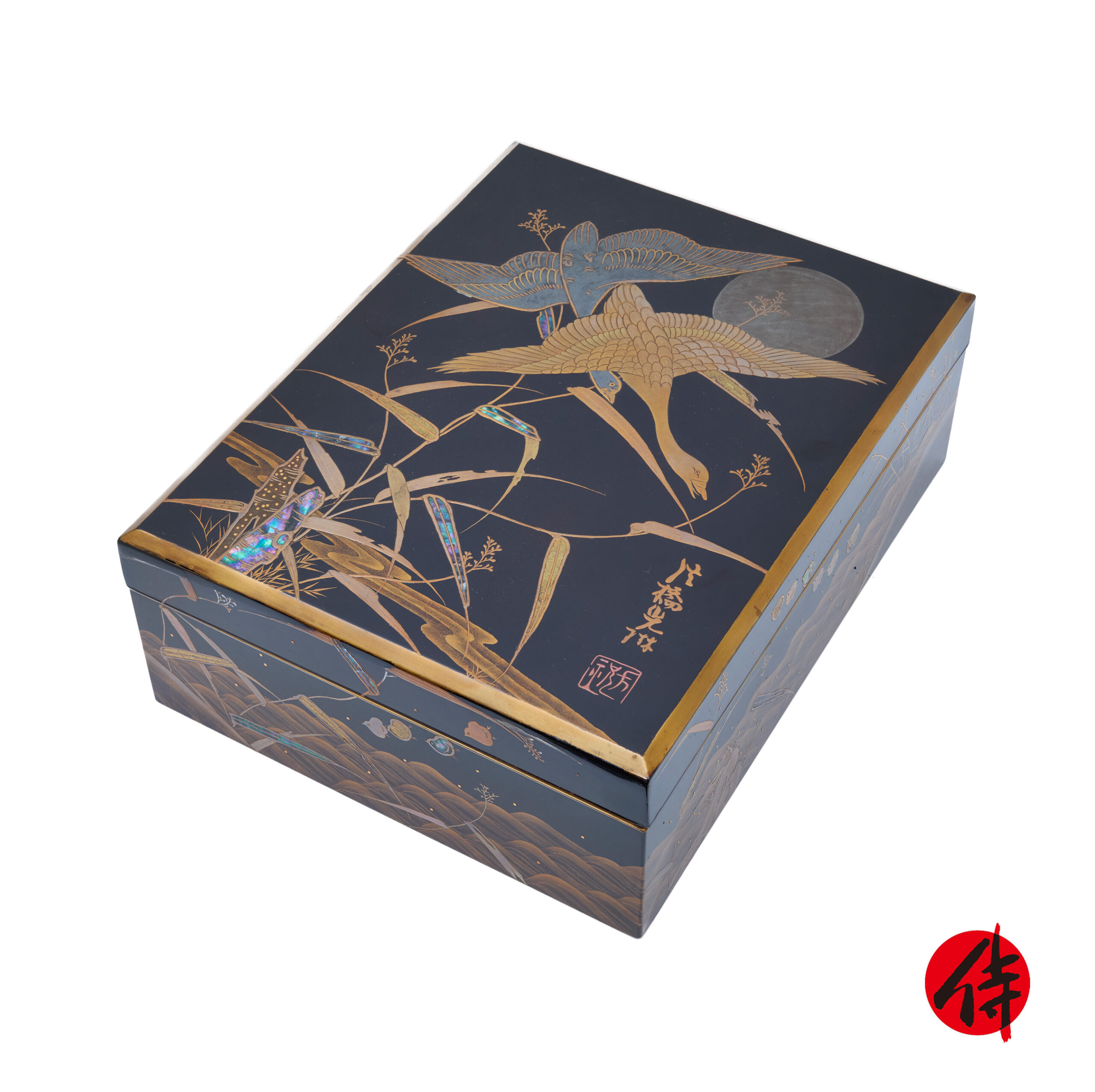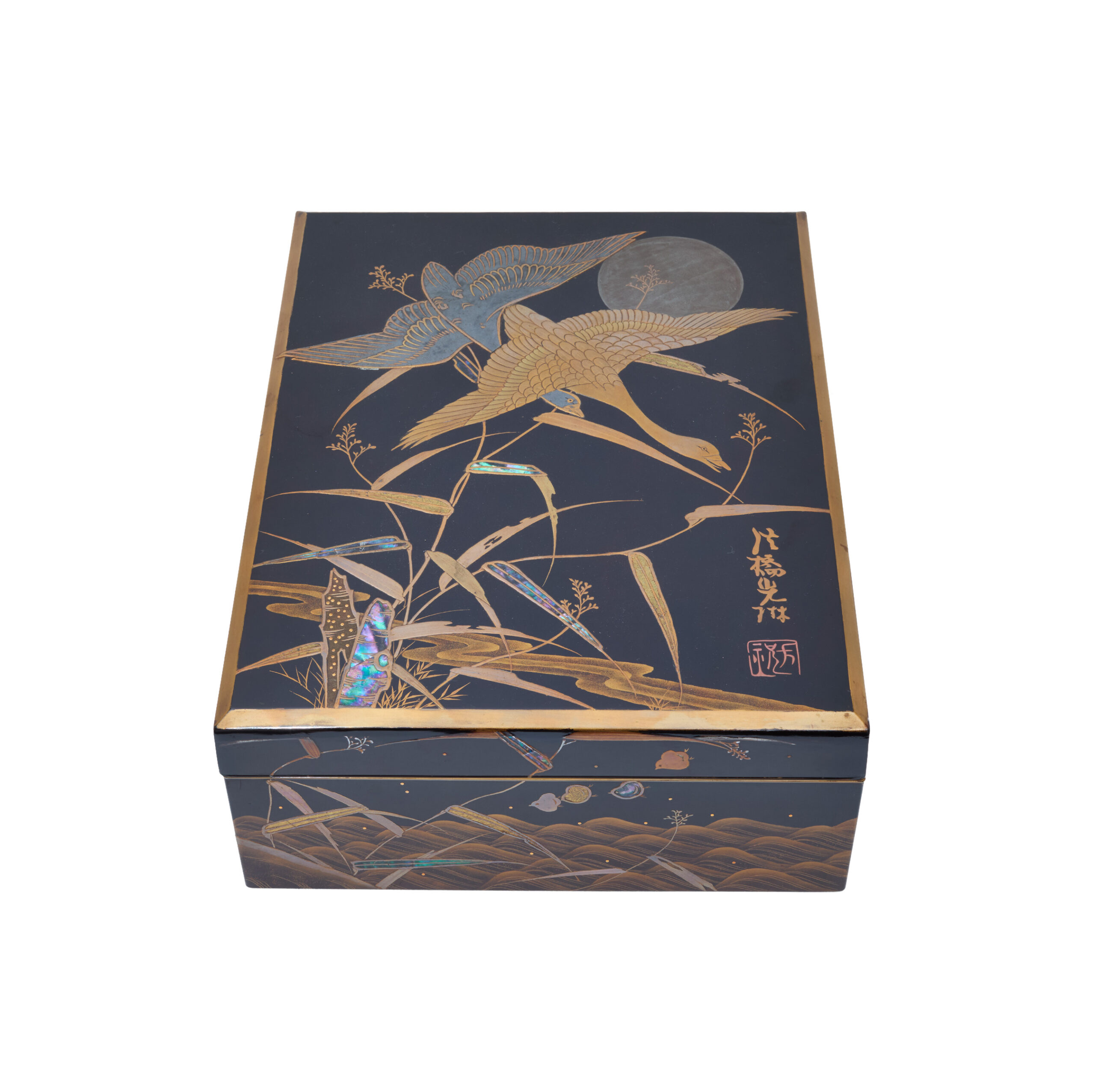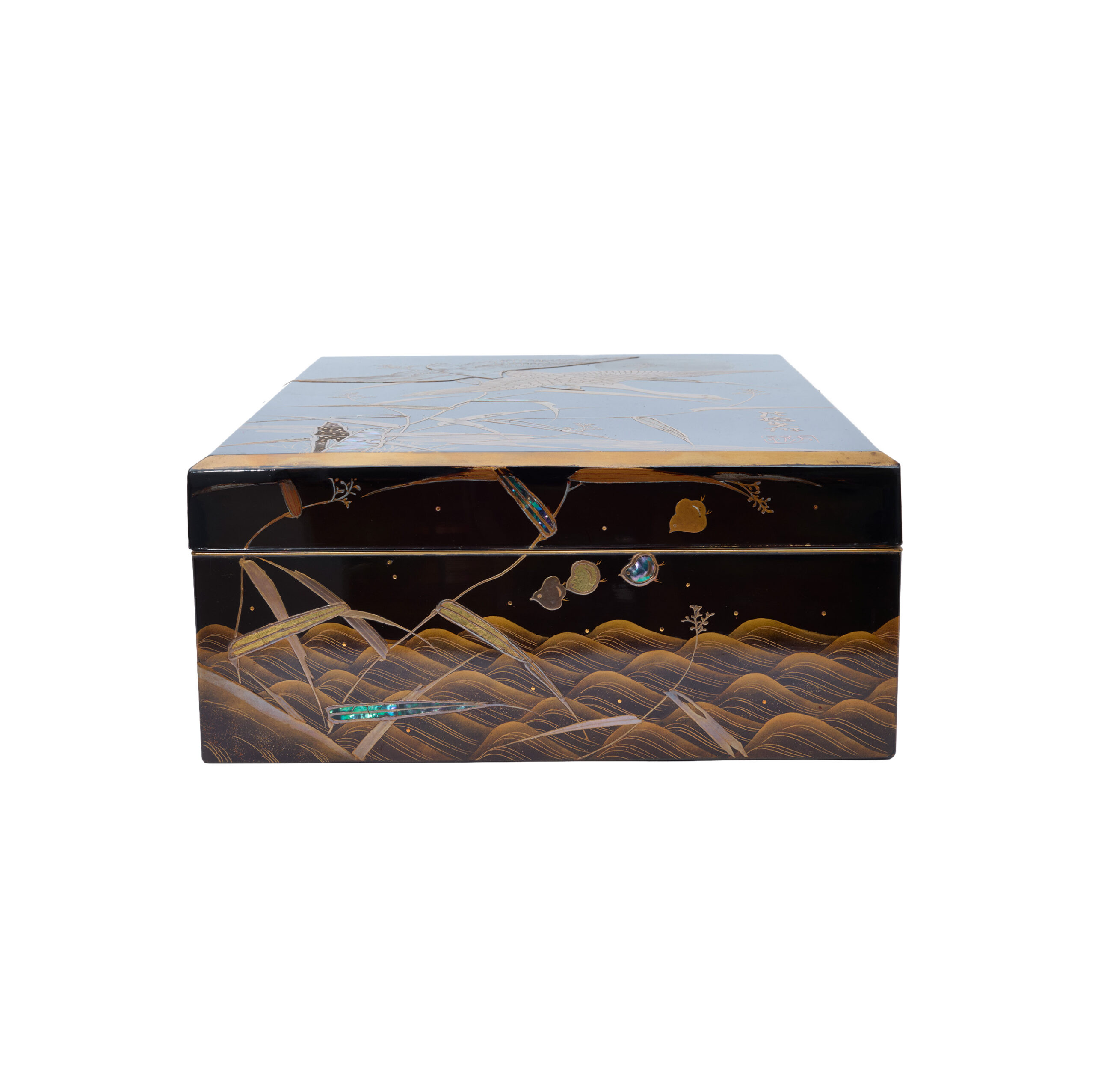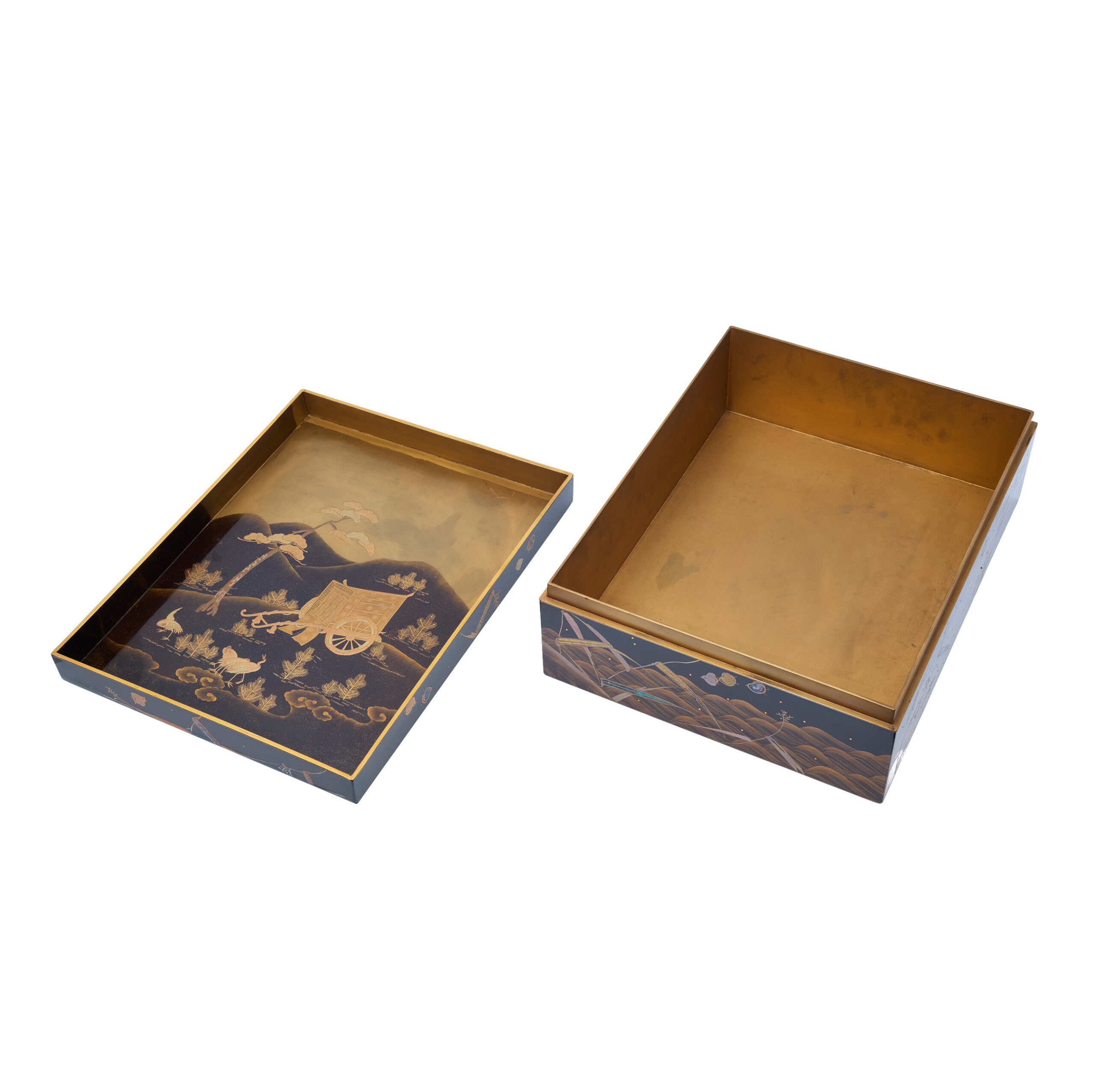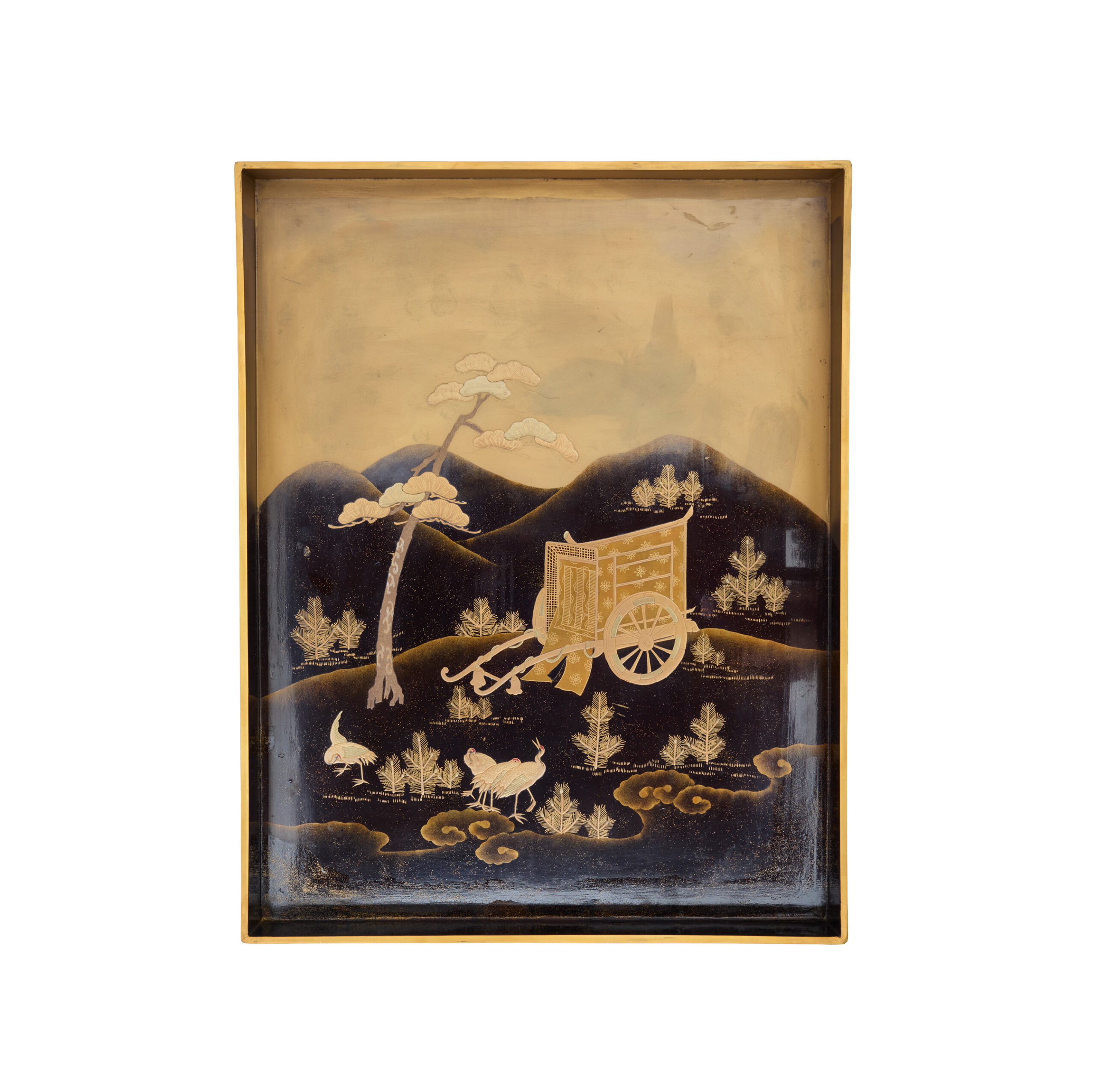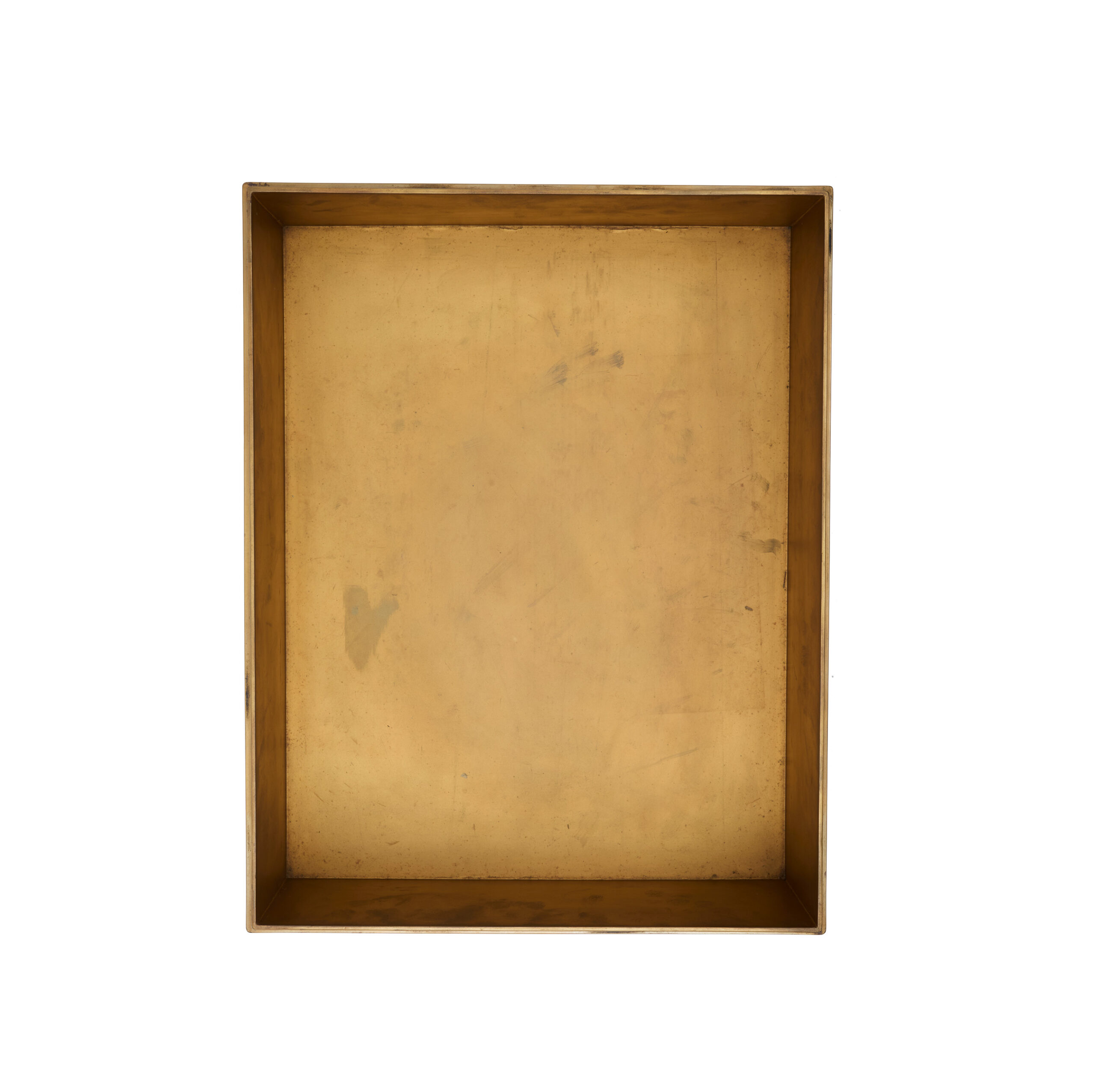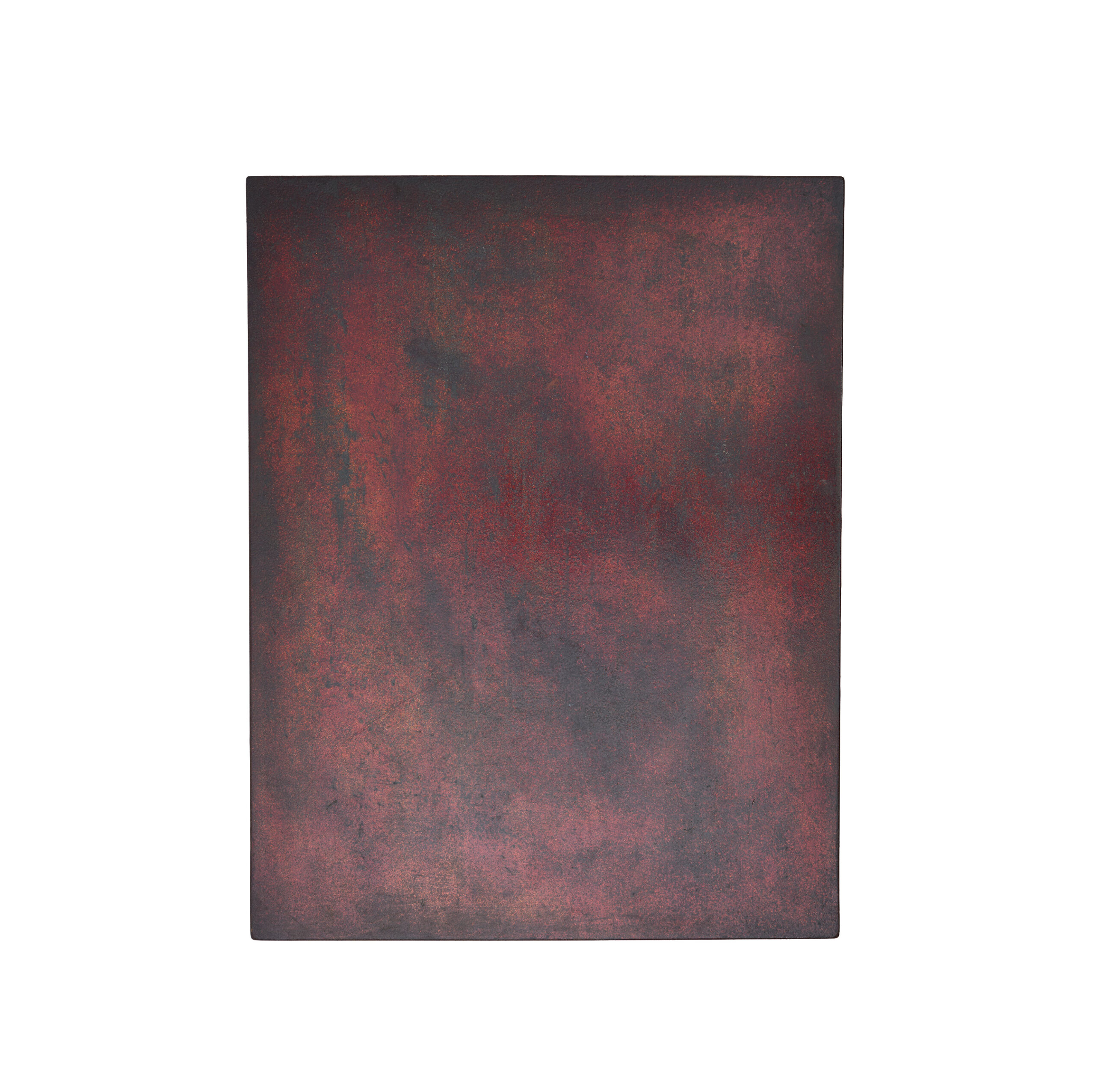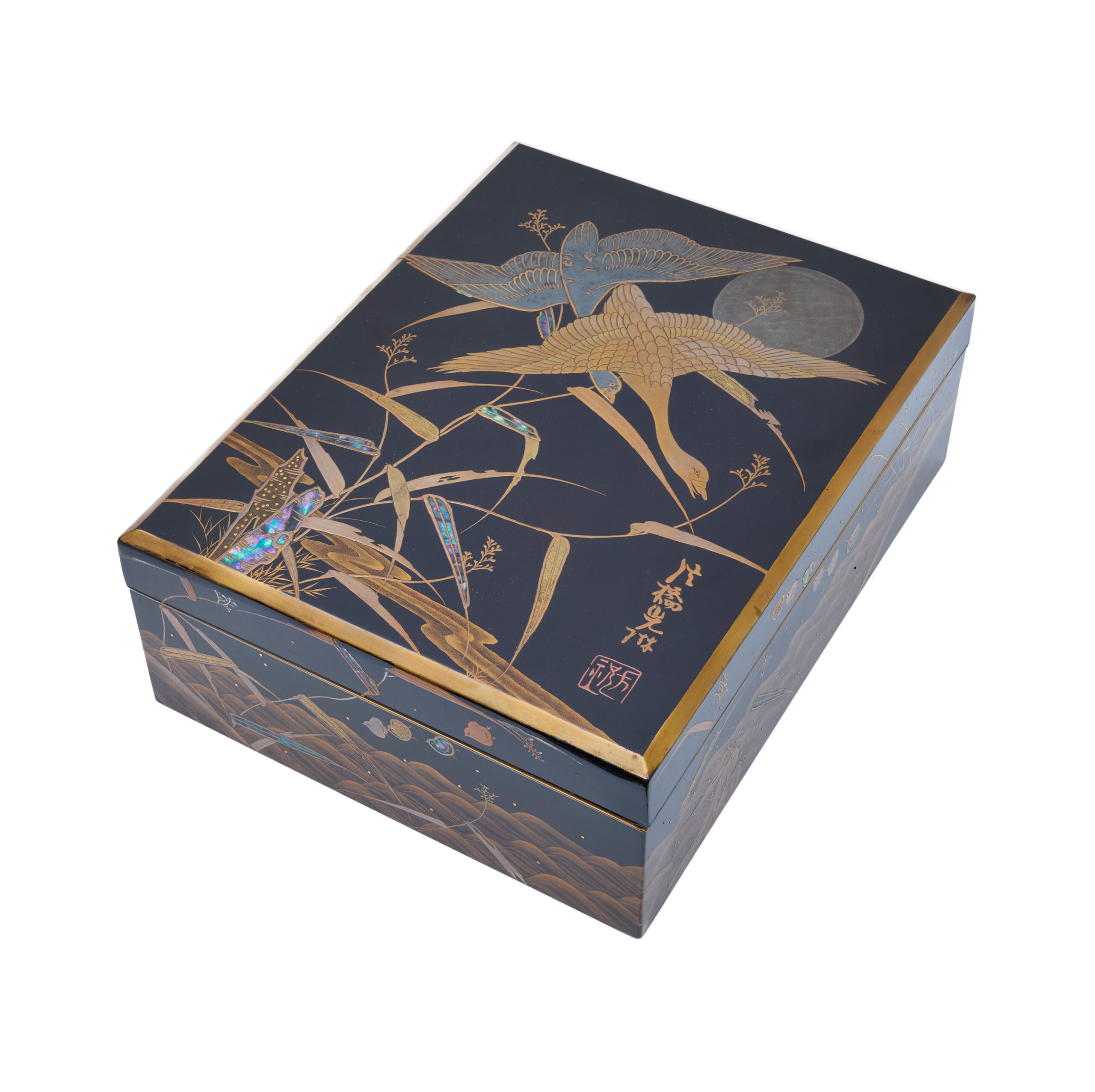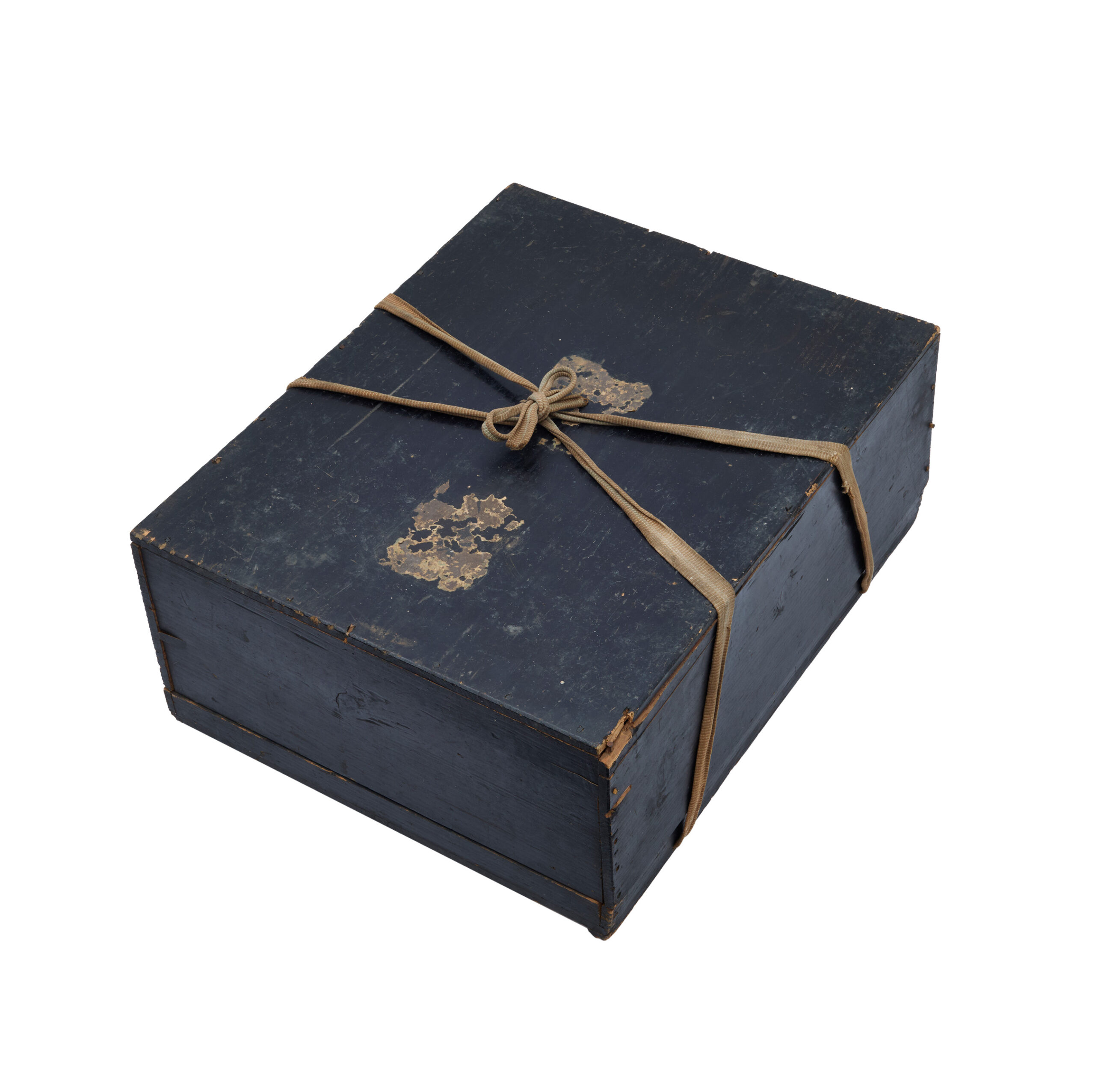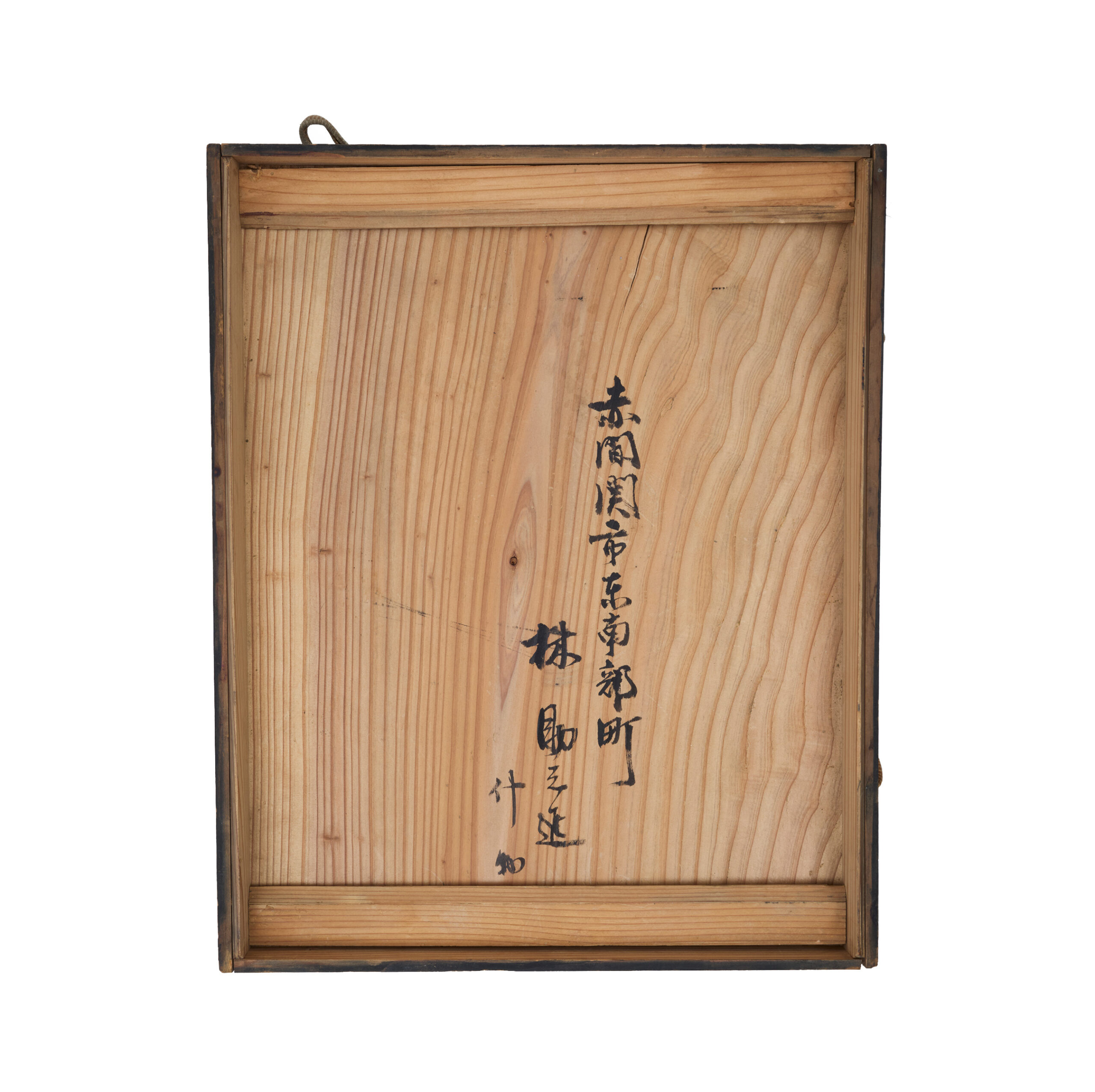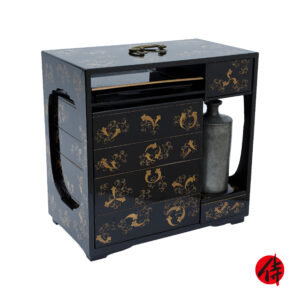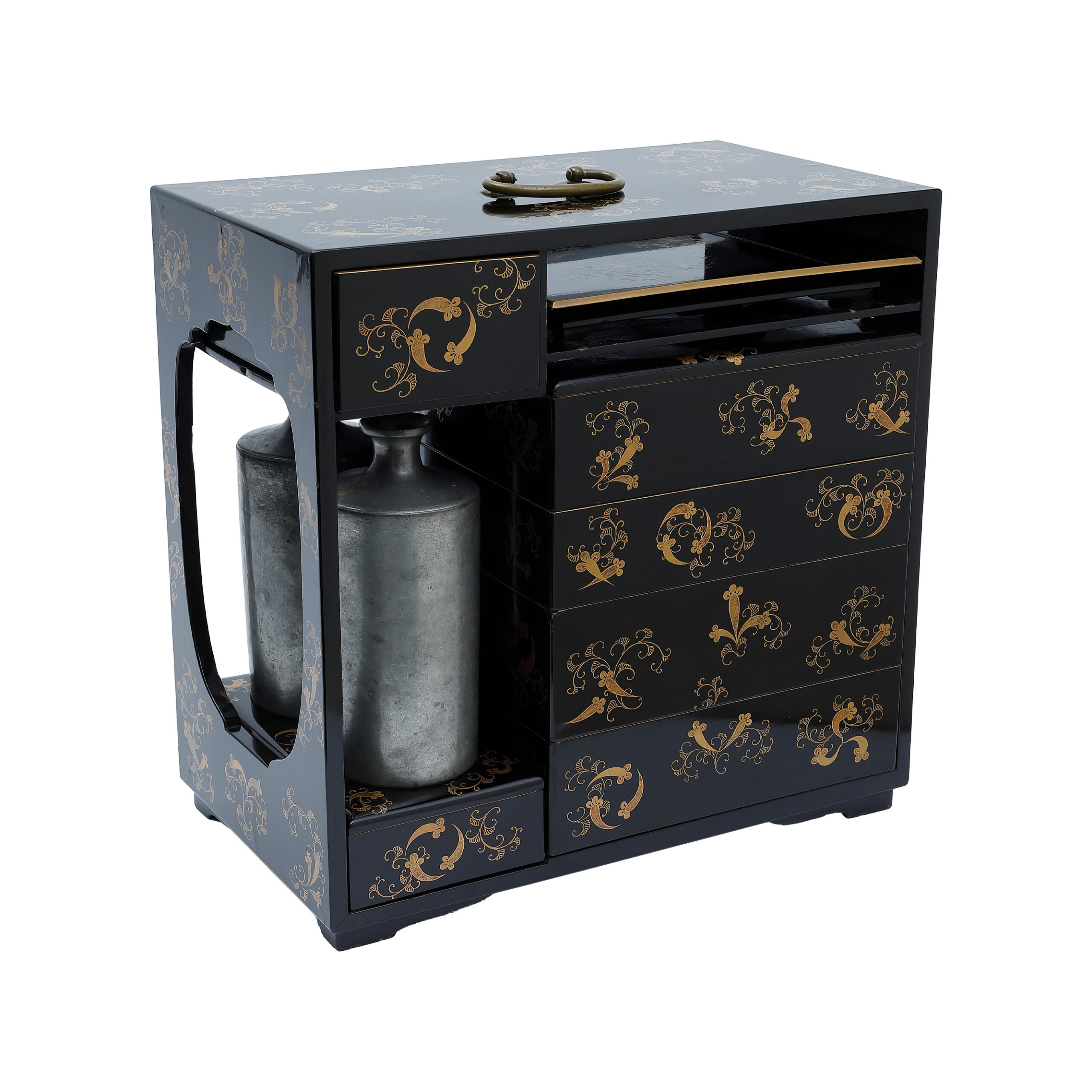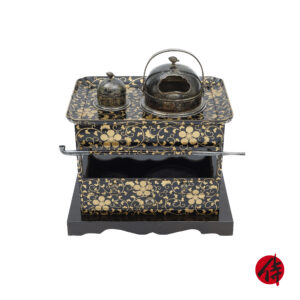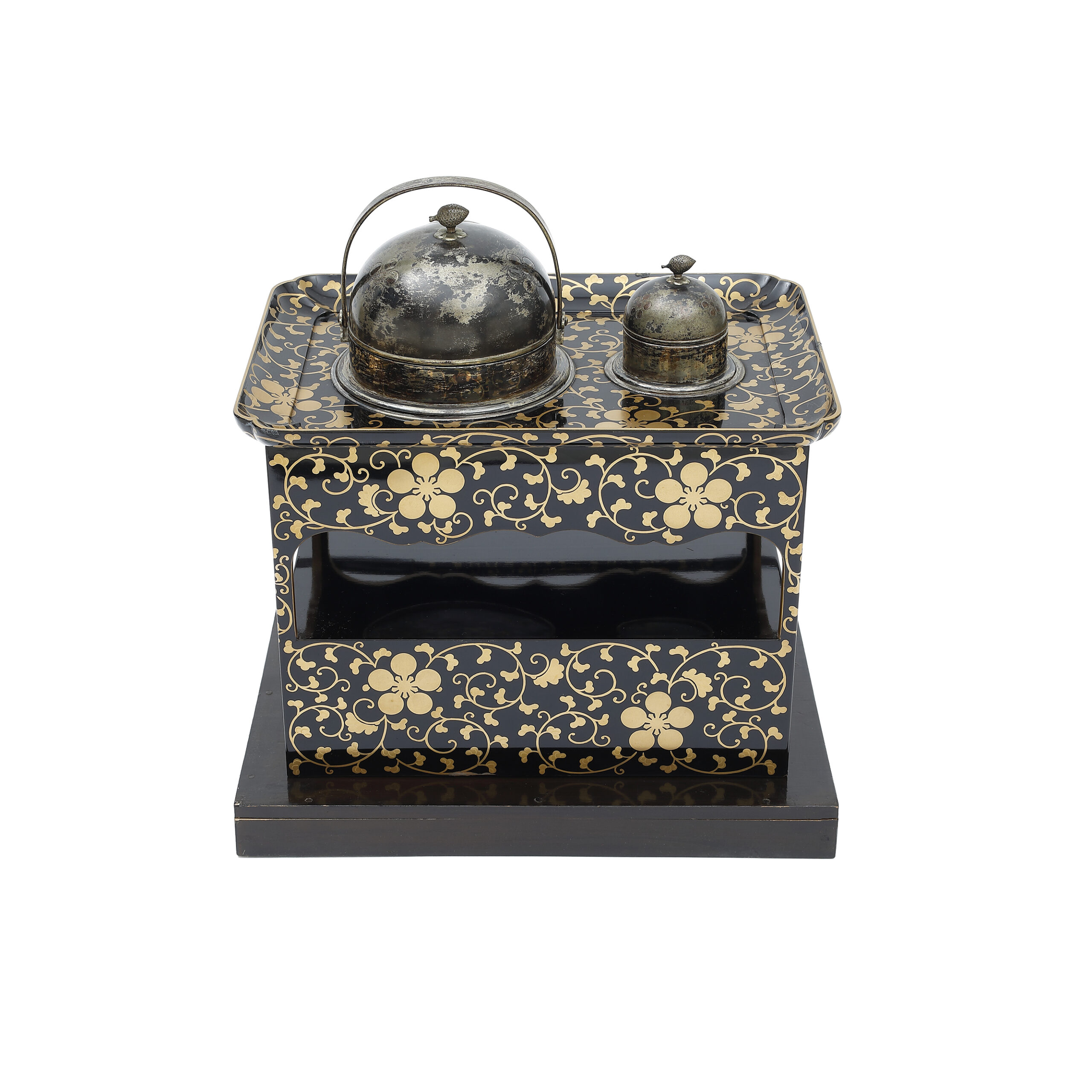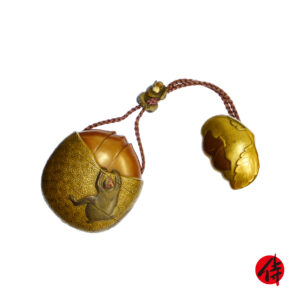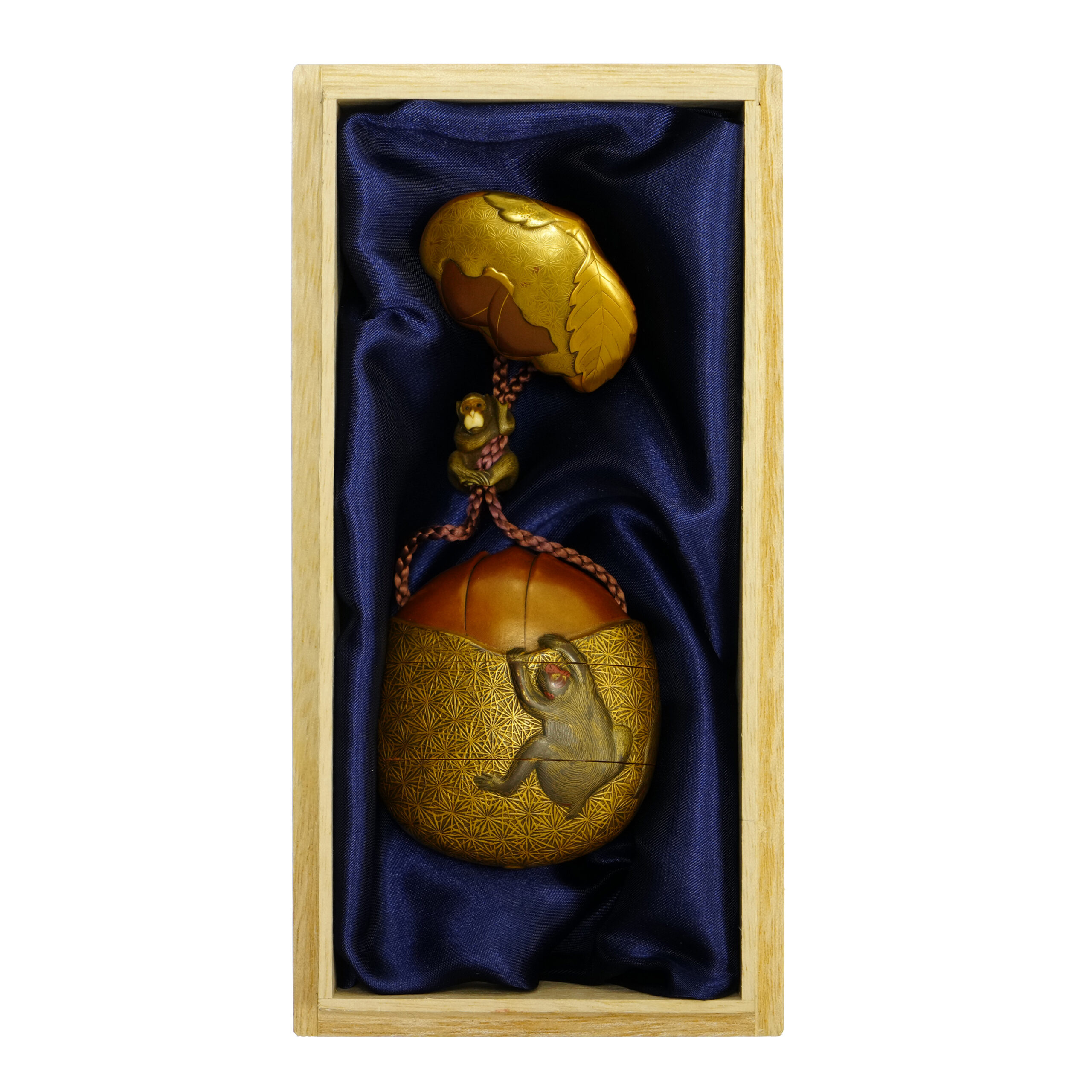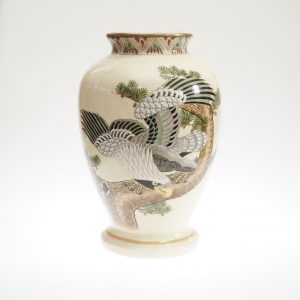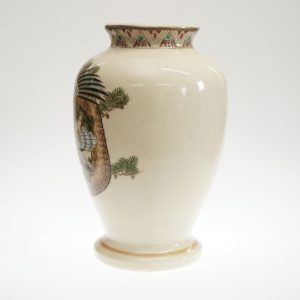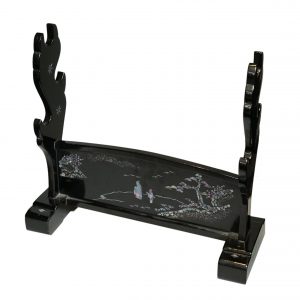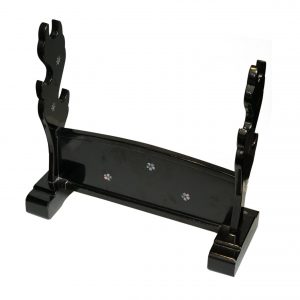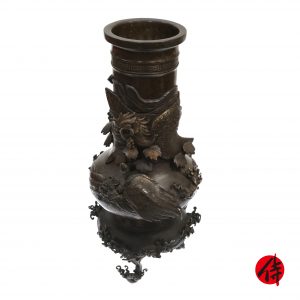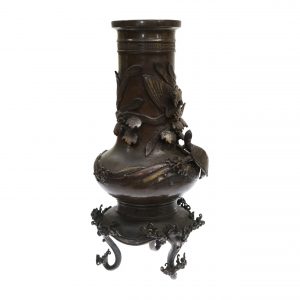Title: Japanese wooden lacquer box-Tsuki ni Gan Zu
Description
A Bunko (文庫) is a box used for storing books, personal belongings, or valuables, and is also known as a Bunko-bako (文庫箱). In Japan, there has long been a custom of storing important items in boxes, and along with this tradition, various decorative techniques for boxes have also developed over time.
This Bunko (document box) has a rectangular shape and is adorned throughout with elegant plant motifs. The wooden surface is finished with refined black lacquer, and the designs are executed using makie (蒔絵), a traditional Japanese lacquerware technique.
Makie is a time-honored technique with a history of around 1,200 years. It involves painting intricate designs on the lacquered surface with a fine brush, and before the lacquer dries, sprinkling gold powder over the design to create shimmering patterns. This method gives the piece a luxurious and graceful appearance, which is beautifully exemplified in this Bunko.
In addition, the design incorporates the raden (螺鈿) technique, in which thinly sliced mother-of-pearl or abalone shell is inlaid into the lacquer surface. This adds an iridescent luster that changes with the angle of light, enhancing the decorative beauty of the piece. The combination of makie and raden results in a richly ornate and visually captivating work of art.
The design theme of the lid of this Bunko (document box) is “Wild Geese and the Moon” (月に雁, Tsuki ni Gan), a classical motif in Japanese art. It is believed to be inspired by Utagawa Hiroshige’s woodblock print “Tsuki ni Gan,” which depicts a serene autumn night scene with geese flying across a moonlit sky—symbolizing transience, elegance, and the passage of time.
The sides of the box feature a motif of plovers (千鳥, chidori) combined with waves(波, Nami). In Japanese tradition, this “Nami Chidori” (wave and plover) pattern symbolizes a harmonious marriage and family safety, representing the idea of overcoming life’s hardships together, just as plovers navigate stormy seas. The simplified and geometric arrangement of plovers is known as chidori-gōshi (plover check), which resembles the Western “houndstooth” pattern. The association with loyal couples remains even today in the phrase “oshidori fūfu” (loving couple), making this design an auspicious and well-loved pattern. It has been used since the Momoyama period, especially in kimono and textiles, and continues to be appreciated today.
Inside the box lid, a decorative motif of a Heian-era ox-drawn carriage, known as a “Gosho-guruma,” is featured. In the Heian period (794–1185), such carriages were used only by the aristocracy and high-ranking court officials. As a result, the pattern came to represent nobility, prosperity, and high social status. Often, these motifs are accompanied by seasonal flowers or auspicious symbols. In this Bunko, the Gosho-guruma is decorated with pine trees and cranes, both of which are traditional symbols of good fortune and longevity in Japan. Together, they convey heartfelt wishes for a long and happy life.
*As this item is an antique, please check each photo and ensure its condition.
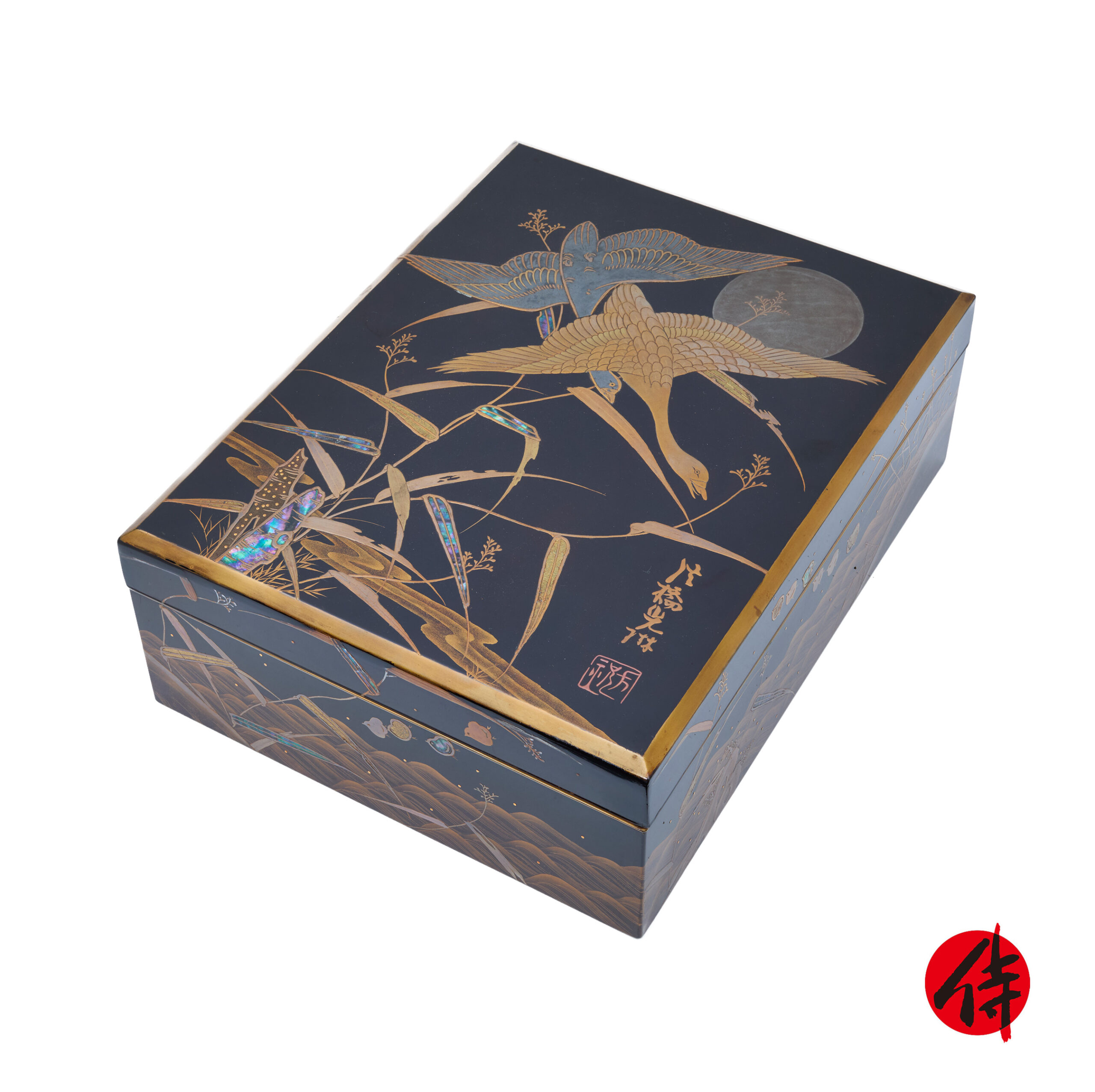
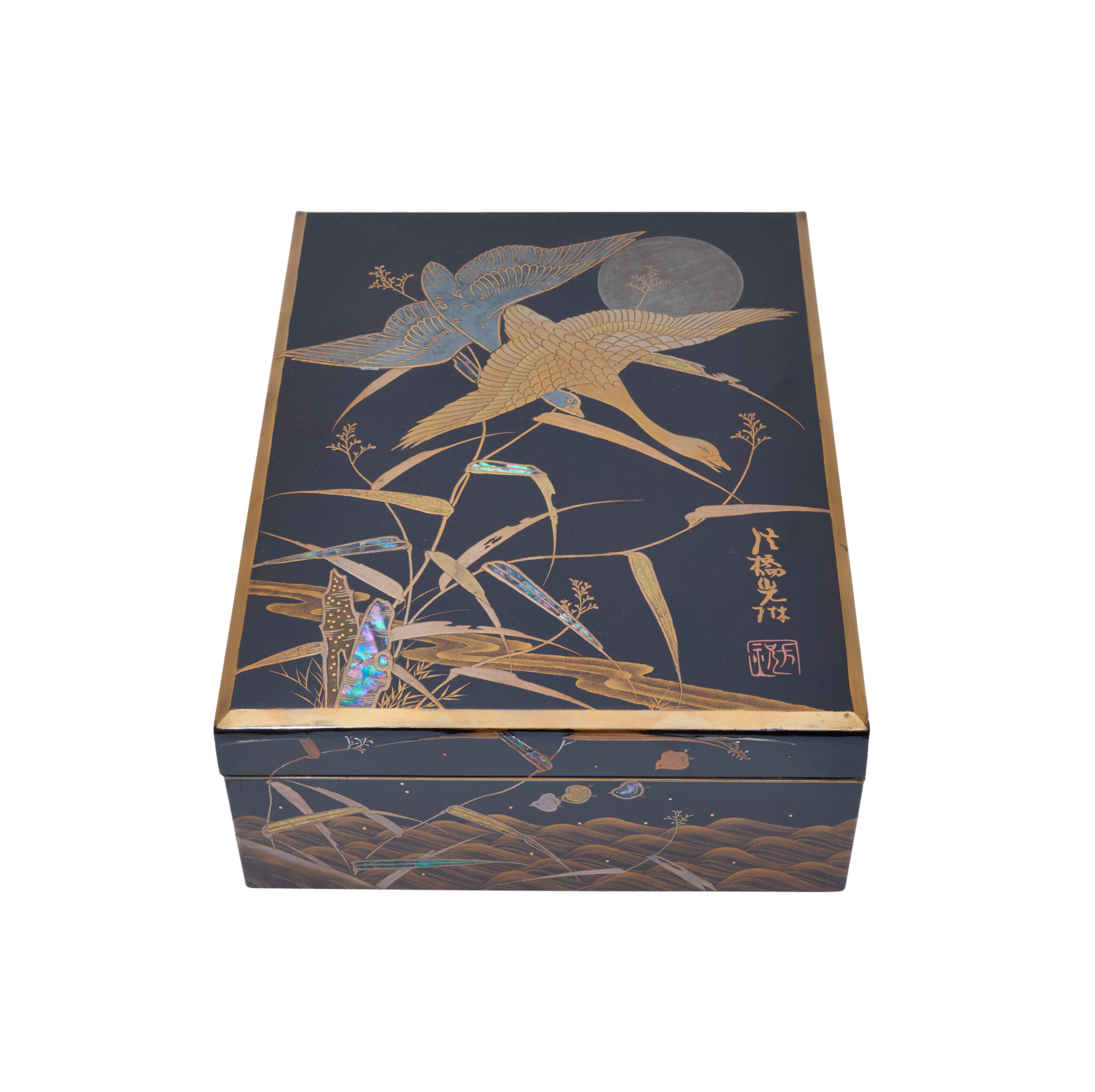
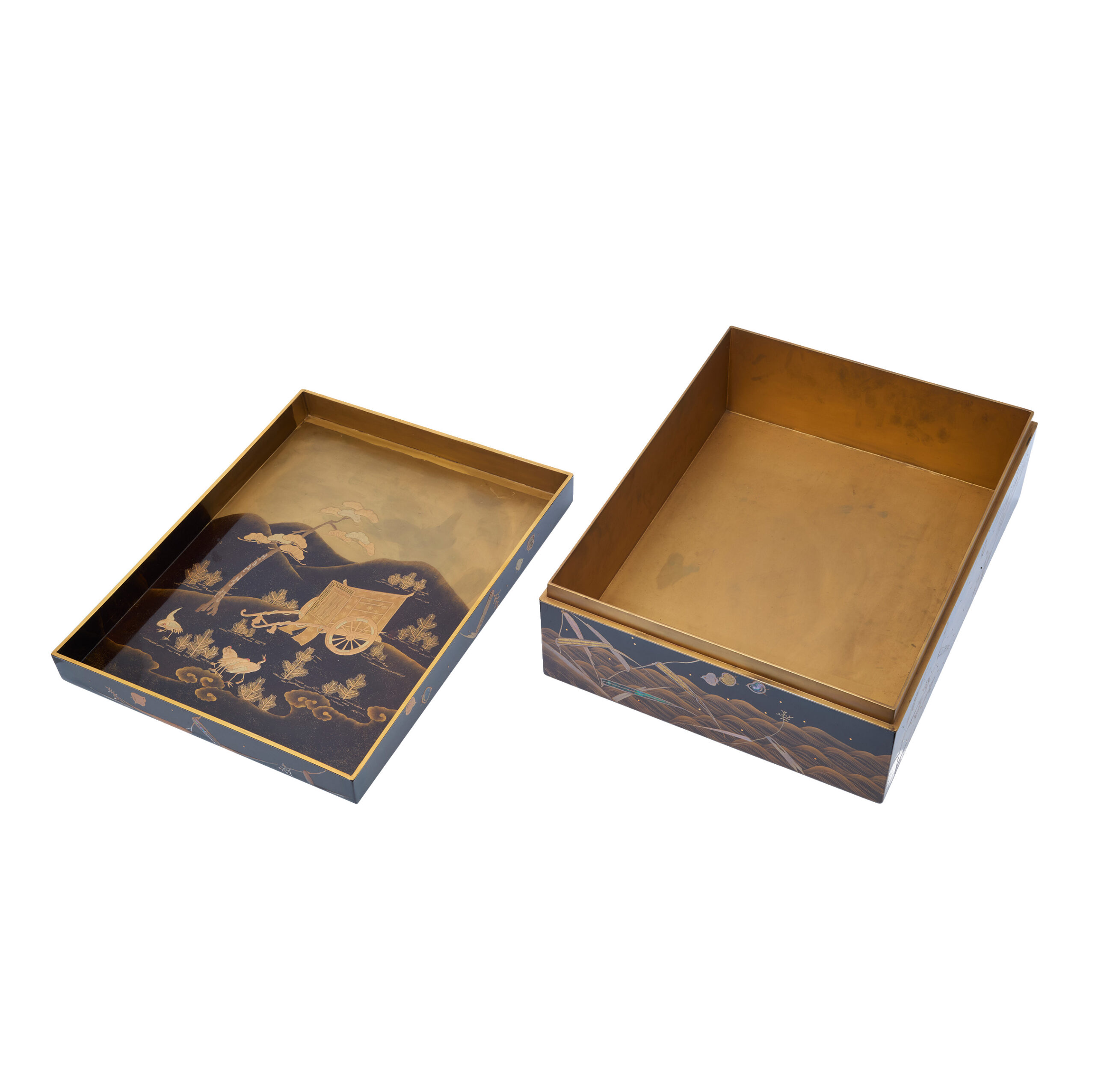
【About us】
Samurai Museum is located in Tokyo, Japan, exhibiting antique artifacts related to the Samurai history. Samurai Museum Shop is the place for those who are interested in Japanese culture and craftsmanship. We deal with antique Samurai swords/armor, traditional crafts made in Japan and so on.
【Payment method】
We accept payment through Stripe (Credit card), PayPal, Apple Pay or ChromePay, all of which are secure payment methods. Also, you don’t need to make an account on Stripe for the checkout. If you prefer other payment method, please contact us. You may either pay in JPY, USD, AUD, CAD, EUR, CHF or GBP. The price is set in Japanese Yen. Prices in other currencies are automatically calculated based on the latest exchange rate.

【Shipping duration】
We normally ship via EMS (Express Mail Service) provided by Japan Post. It usually takes at least 5-14 days to deliver the package after you place an order. Time of delivery is estimated as accurately as possible by the carrier but does not take into account any delays beyond our control such as by inclement weather, post office holiday seasons.
We offer Free International Shipping as long as we can ship your order by EMS. If you prefer other shipping carriers, please contact us.
We will inform you of the order’s tracking number via email. Please make sure you fill out your valid email address correctly.
*If you like to make sure if EMS shipping is available to your country, please contact us.

【Antique Japanese item and Export process】
After receiving the full payment from you, we will apply for its export permit from the Board of Education to legally export the item to other countries. It normally takes around 2 to 4 weeks to receive this permit. And we would like you to expect at least 1.0 – 1.5 months for your order to arrive at your given address after you ordered.
【How to make sure the condition】
Please keep in mind that what you are going to purchase is an antique item. We uploaded high resolution photos for you to check its condition thoroughly. If you like to see more photos with different angles, please feel free to contact us. We will be happy to send them to you so that you can make informed decision.
It is essential for us to know that you are happy with your choice of antique item and we are prepared to use the best of our ability to serve you.
Would you like see some more antique items for sale? Please check the link below. We hope you can find your favorite item.
https://www.samuraimuseum.jp/shop/product-category/antique/
